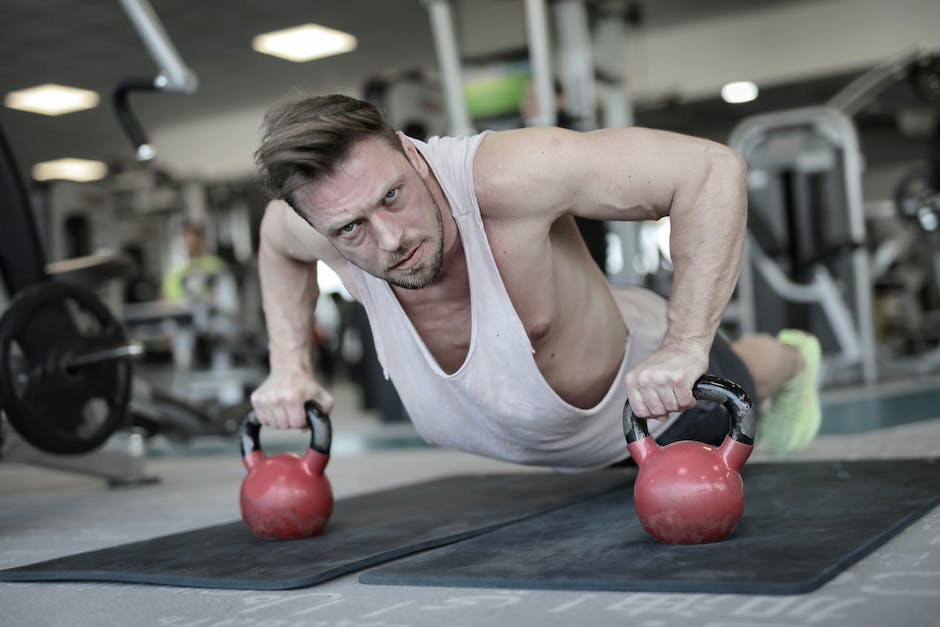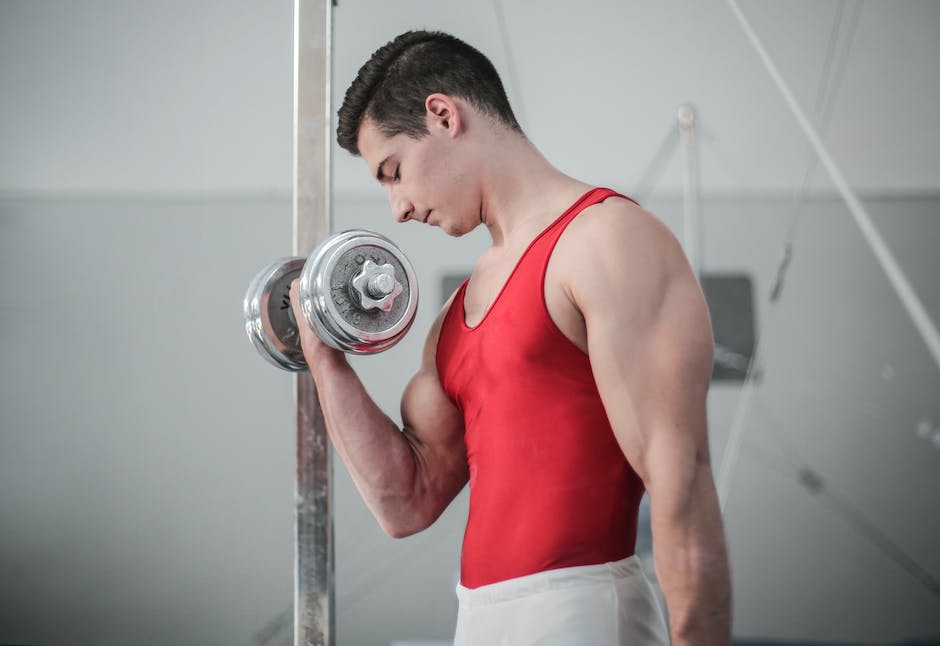The biceps brachii muscle, immediately recognized by its distinctive two-headed appearance, is a quintessential symbol of physical strength and physique. Yet behind its familiar presence, there’s a complex anatomy with each head – the long and the short – functioning and contributing to our movement in unique ways. From basic actions like lifting and pulling to more specialized tasks like stabilizing the shoulder joint, the biceps brachii plays a critical role. To fully comprehend the deep-seated complexities that reside in our upper arms, we delve into the intricacies of the long head and short head of the biceps brachii, understanding their origins, functions, and characteristics, as well as how best to train them for optimal strength and aesthetics.
Anatomy of the Biceps Brachii
Biceps Brachii Anatomy Overview
The biceps brachii is a major muscle located in the upper arm of the human body. This muscle plays a crucial role in the strength and functionality of the arm. There are two distinct parts, or “heads”, of the biceps brachii, which are known as the long head and the short head.
Biceps Brachii: Long Head and Short Head Origins
The long head of the biceps brachii has its root, or origin, at the supraglenoid tubercle of the scapula, which is the shoulder blade. This part of the biceps tendon is also attached to the shoulder joint capsule. On the other hand, the short head of the biceps brachii is situated more medially, originating from the coracoid process, a small hook-like structure on the lateral edge of the superior aspect of the scapula.
Like the long head, the short head also plays a role in shoulder movement due to its origin point. Together, the long and short heads of the biceps brachii work in tandem to aid in a variety of critical movements involving the shoulders and arms.
The Convergence of the Long Head and Short Head
Despite their different origin points on the scapula, both the long head and short head of the biceps brachii converge into a common muscle belly, which is usually located around the radial tuberosity. This combined muscle belly then inserts on the proximal radius and ulna, which are the larger bones of the forearm. The convergence of these heads enables the biceps brachii muscle to execute its basic function: the flexing at the elbow joint, supination of the forearm, and to a smaller degree, shoulder flexion.
Role and Function of Long Head and Short Head of Biceps Brachii
While both heads of the biceps brachii function together to facilitate arm movements, each head also has its unique purpose. The long head crosses both the shoulder and elbow joint, thereby assisting in movements of both these joints. Apart from flexion and supination at the elbow, the long head also helps in abduction and lateral rotation at the shoulder.
The short head, while identical with the long head in providing power to the elbow flexion and forearm supination, does not move the shoulder. As it is attached to the coracoid process, instead, it plays a role in adduction and medial rotation of the shoulder.
A Closer Look at the Biceps Brachii: Long Head vs Short Head
The intricacies of our muscular system go far beyond what meets the eye. For instance, the biceps brachii, a critical muscle in the arm, is composed of two distinct parts: the long head and the short head. The harmonious relationship between these two heads is essential for the functionality of our shoulder and arm, playing a role in everything from everyday tasks such as lifting and pulling, to physical activities like sports or labor-intensive jobs. Understanding their specific roles and how they correlate can enhance diagnoses and treatments for a myriad of shoulder disorders and injuries.

Functions and Characteristics of the Long Head
Zooming in on the Biceps Brachii Long Head: What Does it Do?
Of the two heads of the biceps brachii muscle, the long head is positioned superiorly. Beyond flexing the elbow, one of its critical purposes is stabilizing the shoulder joint. It accomplishes this by preventing displacement of the humeral head, effectively ensuring proper alignment of the upper arm.
In particular, the long head becomes crucial during overhead activities. Much like how a cable supports a suspension bridge against gravity, the long head counteracts gravitational pull. As part of the larger function of the biceps brachii — enabling elbow flexion and forearm supination — the long head takes a more prominent role when the shoulder is also flexed during forceful elbow flexion.
When you show off your biceps by flexing, the distinct ‘peak’ you see is largely the work of the long head of the biceps brachii. Its unique location and the angle at which it pulls create that familiar mountain-like contour on flexed biceps.
Injury Susceptibility of the Biceps Brachii Long Head
Due to its anatomy and array of functions, the biceps brachii long head is more vulnerable to injuries compared to the short head. Conditions like tendonitis, tendinopathy, and tears are common injuries associated with this part of the bicep. Signs of potential problems might include pain in the shoulder or elbow, particularly when lifting objects, reduced strength in arm flexion, or visually noticeable changes in the biceps’ shape.
Comparison with Biceps Brachii Short Head
In contrast, the biceps brachii short head, situated medially, or beneath the long head, contributes little to the biceps’ ‘peaked’ appearance. It is more involved in movements where the shoulder is extended, such as pulling activities. Moreover, due to its exclusive attachment on the scapula, compared to the dual attachment of the long head, the short head is less susceptible to injuries.
In essence, the two parts of the biceps brachii muscle, the long head and the short head, each play their own unique roles. The long head, positioned prominently in the arm, is instrumental in stabilizing the shoulder and flexing the elbow. This prominence also contributes to the ‘peak’ that forms during the flexing of the biceps, but it also makes it more prone to injuries. The short head, meanwhile, might be less visible, but it undertakes critical roles in certain movements and is less susceptible to injury. Understanding these differences between the long and short heads of the biceps brachii provides a more comprehensive view of the contrasting functions and properties of each.

Photo by zahraamiri_ on Unsplash
Functions and Characteristics of the Short Head
Introduction to the biceps brachii Muscle
Commonly referred to as the biceps, the biceps brachii is a muscle found in the upper section of your arm, extending between the shoulder and elbow. This muscle features two distinct parts, known as “heads,” encompassing the long head and the short head. Situated beneath the long head is the short head of the biceps brachii. This area primarily assists in the rotation of the forearm and flexion of the elbow.
Functional roles of the short head
The short head of the biceps brachii has unique functional roles in relation to the long head. It is responsible for flexion and supination of the forearm. This means that when the short head contracts, it bends the elbow, bringing the forearm towards the upper arm, and rotates the forearm so that the palm faces upwards. These movements are integral to activities involving lifting and pulling.
Contributions to appearance
In addition to its functional roles, the short head of the biceps brachii also contributes substantially to the overall appearance of the biceps. It is located on the inside of the upper arm and is typically broader than the long head. The level of muscular development and the amount of body fat covering the muscle will significantly impact the visibility of the short head. People with a well-developed short head will usually have a bulkier and more rounded appearance of the biceps.
Injuries and care
While the short head of the biceps brachii is generally quite robust, it can be prone to certain injuries like other muscles in the body. For instance, frequent heavy weightlifting or repetitive movements can lead to a strain or tear in the muscle. Symptoms may include sudden and severe pain, swelling, bruising, weakness in the arm, and difficulty moving the elbow or forearm. It is crucial to note that any possible injuries should be promptly evaluated and treated by an healthcare professional to prevent further complications and promote optimal recovery.
Introduction to the Long Head of the Biceps Brachii
The long head of the biceps brachii is a major component of the bicep muscle group. Its length spans from the scapula, or shoulder blade, to the radius, one of the primary bones in the lower arm. This muscle is primarily responsible for raising the arm, rotating the forearm, and flexing the elbow. The long head becomes particularly noticeable when the arm is flexed due to its larger size and more prominent placement. While both the long and short head of the biceps brachii work together to execute complex movements, each possesses unique traits that contribute to the overall functional and aesthetic nature of the arm.

Training the Biceps Brachii for Strength and Aesthetics
Exploring the Complexity of the Biceps Brachii
Commonly known as the biceps, the Biceps Brachii is a vital two-headed muscle in the upper arm. These two distinct parts, referred to as the “long head” and the “short head,” work together harmoniously to enable motion in both the shoulder and elbow. Positioned on the outer portion of the arm is the long head, which plays a significant role in stabilizing the shoulder. Conversely, the short head, situated on the inside of the arm, contributes largely to the fullness and peak of the bicep muscle.
Training Biceps Brachii for Strength
To develop strength in the biceps brachii, both the long and short heads of the muscle must be conditioned. Exercise selections should be diverse and should target the muscle group from various angles. For example, exercises like barbell curls and dumbbell hammer curls stimulate both the long and short heads. However, barbell curls primarily target the long head, while hammer curls specifically work the short head.
Recovery in Bicep Training
Recovery is paramount in any training regime, including bicep training. Rest periods allow your muscles to repair and grow stronger. Taking at least one to two rest days per week specifically for the biceps can promote better endurance, strength gains, and muscle growth.
Training Biceps Brachii for Aesthetics
For aesthetically pleasing biceps brachii, attention must be paid to both the long and the short head. The long head is responsible for the bicep peak, while the short head gives the bicep width. Building an impressive ‘peak’ requires exercises that particularly target the long head. Concentration curls and dumbbell curl variations are effective at recruiting the long head of the biceps brachii because of the level of isolation they provide.
Customizing Exercise Routines
The key to optimising biceps growth involves understanding your body and tailoring your training routine. If you find that your bicep size is lacking, you’d benefit from exercises targeting the short head, such as preacher curls or hammer curls. Conversely, if you lack a prominent ‘peak’, focusing on the long head, with movements like incline dumbbell curls or concentration curls can be beneficial.
Conclusion
By understanding the roles of the short head and long head of the biceps brachii, you can target your training to prioritize strength, recovery, or aesthetics. From barbell curls to hammer curls, incorporating a blend of these exercises into your routine will enable you to effectively achieve your fitness goals.

In the quest for strength and aesthetics, understanding our own musculature is a compelling advantage. Having explored the nuanced details of the biceps brachii – spanning from its two distinct heads with their own unique roles and characteristics, to their deriving points and the effects on function – an enriched perspective to personal training is awarded. As we sift through the distinct functionalities of the long head and short head, we can be better poised in our workout routines, tailoring exercises that target each head effectively. However, with insight comes responsibility, being aware of their vulnerabilities to injury, calls for prudence in our training approach. So, as we continue to push the boundaries of our physical potential, let’s do so with knowledge and respect for our intricate anatomy.
